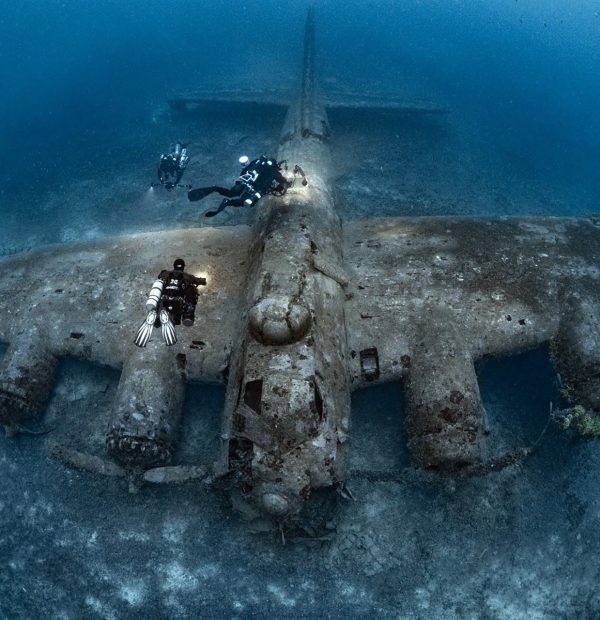Thursday, 16 May 2024
Menu

The wreck of the Brazilian freighter SS Olinda has been located 79 years after it was sunk. The ship was sunk during World War II by the German submarine U-432. The discoverers reported that using side scan sonar they were able to track the wreck to a depth of 100 metres.

The ship was built in 1905 in a shipyard in Glasgow, Scotland. The first name that was given to the vessel was Cara. Subsequently, successive owners changed the freighter’s name two more times. First in 1913 it was renamed Kennemerland and then in 1934 Olinda.
The SS freighter Olinda was sunk by U-boat U-432 in American waters shortly after the United States entered the war (7 December 1941). The vessel was sailing from Brazil with a cargo of cocoa beans, coffee and oil. It was no use marking the ship clearly as a neutral vessel and sailing under the Brazilian flag.

The German submarine U-432 appeared in the region on 15 February 1942. Her crew immediately marked their presence by sinking another Brazilian freighter, Buarque, off the coast of North Carolina. Then three days later, on 18 February, after encountering the SS Olinda, a less than 110 metre long freighter bound for New York, she attacked this vessel as well.
Visibility that day was good. The meeting of the two vessels took place around noon. The freighter SS Olinda had large, visible Brazilian flags painted on her hull, so it is hard to speak of a coincidence. The ship’s crew was forced to flee in lifeboats after the U-432 surfaced and began firing on the ship. However, unable to sink the freighter in this way, they finally decided to fire a torpedo in its direction, which sent the vessel to the bottom. All 46 crew members of the SS Olinda were rescued the next day by the American destroyer USS Dallas.

Why did the commander of U-432, Kapitänleutnant Heinz-Otto Schultze, ignore the fact that both vessels were sailing under the flag of neutral Brazil? This we can only guess at. It must be stressed, however, that at this stage of the war the Americans still had very limited capabilities to combat U-boats. Therefore, it is not surprising that for some time the U-boats were very audacious, trying as hard as possible to make themselves felt that entering the war against Germany was a mistake.
Being one of the few large wrecks in the region yet to be located, the SS freighter Olinda became a natural search target. Archival German records from the war indicated the Baltimore Canyon as the site of its sinking. The searchers contacted Dr. Steve Ross of UNC-Wilmington, who along with Dr. Rod Luther of URI, conducted a detailed survey of the canyon with multibeam sonar in 2011.
Having established that the wreck had not been located during their expedition, they contacted Eastern Search & Survey colleagues Rusty Cassway, Gary Gentile and Michael Barnette. It was they who found a consistent pattern in the German records. After applying it, they changed the official site of the Baltimore Canyon sinking and identified a suggested new search area.

At the new search site, the algorithms used identified a search prospect based on a database of strandings from commercial fishing operations. Almost immediately upon arrival at the site, the searchers went directly over the wreck. The combination of multiple search perspectives and the application of different techniques translated into the rapid discovery of the wreck of the SS freighter Olinda.
The wreck of the Brazilian vessel rests on the bottom at a depth of 100 metres. It settled evenly on its keel after being sunk and appears to be in good condition. The clearly visible bow is well preserved. The anchor winch with chains is also visible. Some of the holds are intact, while others have clearly suffered damage. Although the superstructure is still in place, it gives the impression of being close to collapse. The stern is in the worst condition. Because it has probably been flattened by the heavy impact on the bottom.

No doubt the wreck is within the reach of experienced and advanced technical divers. The team is therefore planning to organise an expedition to produce detailed photographic and film documentation.
Finally, it is worth mentioning that the funds for the expedition were raised by the organisers through the crowdfunding portal Go Fund Me. The explorers stressed that the implementation of the search was possible thanks to the financial support of sponsors from the local fishing and diving community. Interestingly, sponsors who have contributed a minimum of $50 will receive the coordinates of the wreck after the expedition is completed (probably in early autumn).










Welcome to DIVERS24.COM, your daily source of scuba news, freediving, scuba diving information, and equipment reviews. Our comprehensive coverage of the dive industry from A to Z provides you with all the latest scuba news, training updates, underwater photography tips, and everything else related to scuba diving. Whether you’re a beginner or an experienced diver looking for more knowledge about scuba gear or techniques – we’ve got it covered! With our in-depth articles written by experienced divers who have been there and done that, you are sure to find exactly what you need here at Divers24.com. Dive into scuba news today!
Underwater Media Sp. z o.o.
Szafarnia 11/F8,
80-755 Gdansk, Poland
Welcome to DIVERS24.COM, your daily source of scuba news, freediving, and scuba diving information. Sign in for a weekly news update and discount coupons for dive gear and apparel.
@2023 - underwatermedia.pl. All Right Reserved. Designed and Developed by Tworzenie stron internetowych Gdansk

The Divers24 portal is currently the largest online medium treating diving in Poland. Since 2010 we have been providing interesting and important information from Poland and around the world on all forms of diving and related activities.
Contact us: info@divers24.com